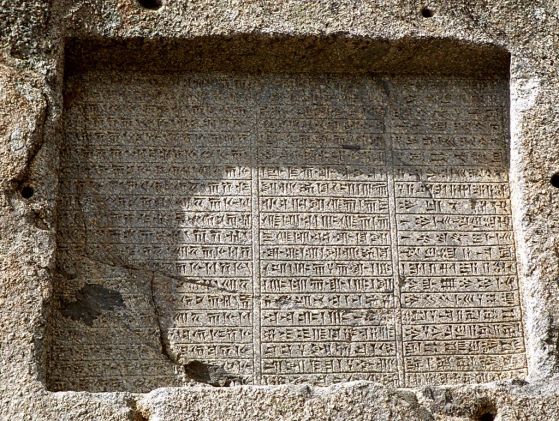After researching and deciphering texts from 33 clay tablets, most of which were found in the royal treasury of Persepolis, the center of the Persian Achaemenid Empire turned out to be something like a “payroll”. Their content is information on which workers were paid and in what amount. It is also stated that it was paid in silver by the royal treasury. This is the first documentary evidence of its kind – and it is very important.
Little is known about slaves in the vast Achaemenid Empire, which included the lands from Egypt to present-day Pakistan, and to the north the empire bordered the Thracians.
It is certain that there was slavery, but in different parts of the empire the attitude towards slaves was very different.
Slavery certainly existed in Egypt, Media, and Babylon before the rise of the Achaemenid Empire. At the same time, there is written evidence that the word they used to refer to slaves in the empire was used by Darius I to refer to his generals and satraps (governors of the provinces). Greek authors claim that, figuratively, the entire Persian people are slaves to the king. Probably hired workers in some contexts can also be described as slaves.
In the meantime, it is important to understand the real situation of slaves in the Persian Empire – if all those referred to as “slaves” were in fact slaves, then their share is very large and they could make up the majority of the population. If the “slaves” mentioned by the sources are simply a form of ceremonial humiliation or respect for the head of the empire, then the majority of the population of the empire are free people.
This is important for understanding the ancient history of the Middle East and depends on which of these views is correct.
Due to the aforementioned linguistic confusion, a number of historians claim that all workers hired by government (at the time this was usually construction) were slaves. But slaves are not paid in silver and do not end up in “accounting records.”
The 136 people who received silver salaries according to the tables were masons and plasterers.
The tiles were discovered in the 1930s by archaeologists from Chicago during excavations at Persepolis, the ceremonial capital of the Persian Empire. Persian artifacts have long been at the University of Chicago. In February 2018, the US Supreme Court decided to send the findings to Iran, which happens in 2019.
Tiles contain a wide variety of information. According to scholars, they reveal the economic, social and religious history of the Achaemenid Empire (550-330 BC), as well as the entire region in the Middle East in the 5th century BC, as the Achaemenid Empire was the largest country in the Middle East at the time.
The inscriptions are in Elamite, now a dead language spoken by the Elamites in the ancient land of Elam, which includes part of the Mesopotamian Plain to the east coast of the Persian Gulf. Elamite is considered an isolated language, meaning it has nothing to do with other languages on Earth, which, of course, makes it difficult to decipher the records. Around the beginning of the first millennium BC, Iranian-speaking tribes began to displace the Elamites. But even after the conquest of Elam by the Achaemenid Empire (6th century BC), the language remained in use for at least two more centuries. As can be seen from the finds, Elamite was used for business records even by government officials under Darius I.
Darius I, also known as Darius the Great, was the third Persian king of the Achaemenid Empire. His reign lasted from 522 to 486 BC. During this time, the Persian Empire reached its heyday. Darius led military campaigns in Europe, Greece, and even the Indus Valley, and expanded his country to conquer new lands.
But Darius is known not only for successful military campaigns, he improved the legal and economic system, carried out administrative reform, dividing the country into 20 satrapies. It imposes a tax system throughout the country that strengthens the state and supports the development of agriculture, crafts and trade.
Darius I is also known for his major construction projects throughout the Persian Empire, during his time many temples and palaces were built, restored the ancient canal from the Nile to Suez, developed road infrastructure.
He built a new capital, called by the Greeks Persepolis (“City of the Persians”), which is located 60 kilometers northeast of the city of Shiraz in the province of Fars and is one of the archaeological sites that have no analogues. The city was burned by Alexander the Great in 330 BC. Now the ruins of Persepolis are a huge palace complex with an area of 135 thousand square meters with majestic gates, monumental stairs, throne rooms and is among the largest archaeological sites in the world.












